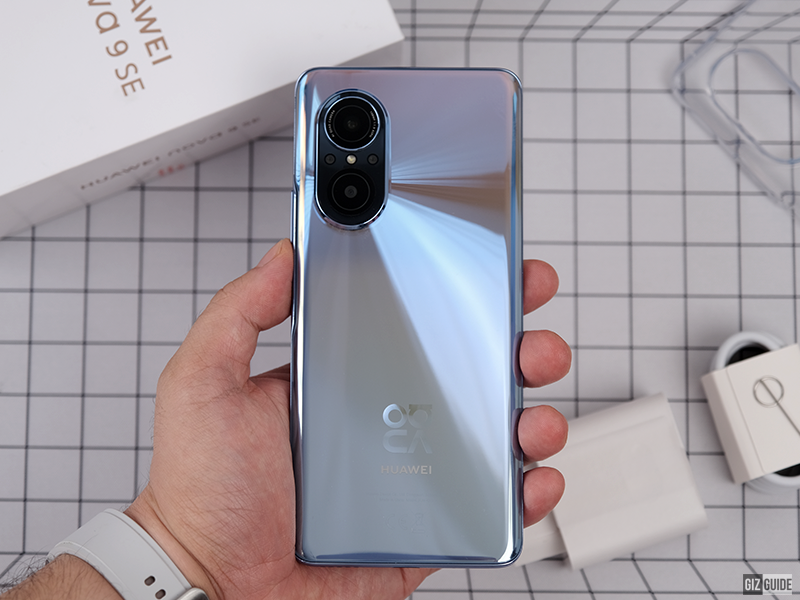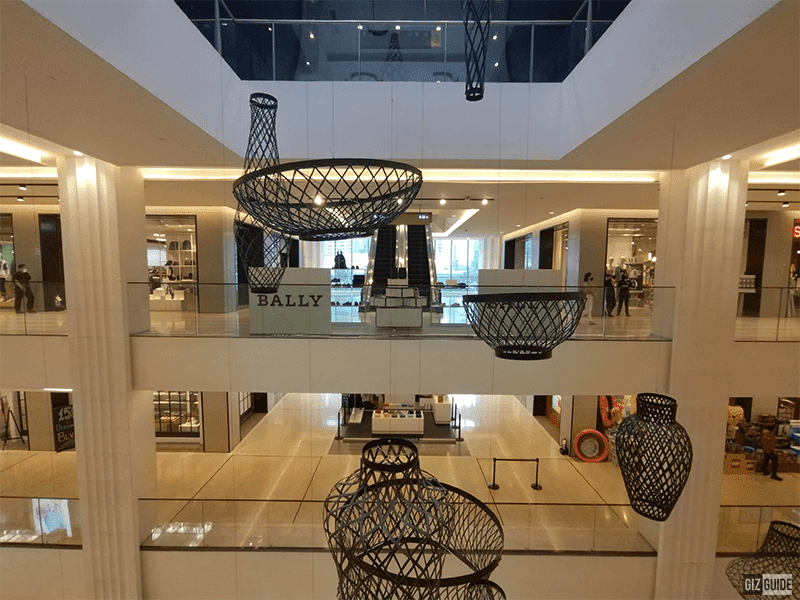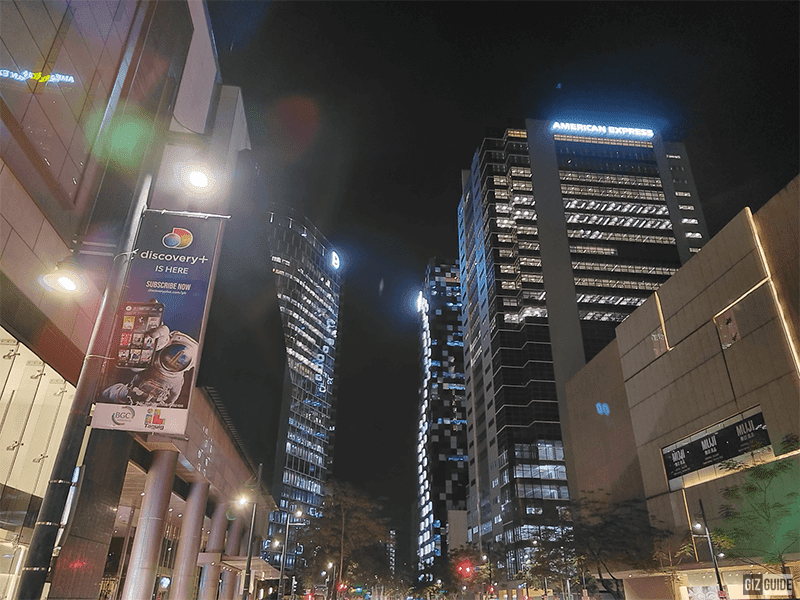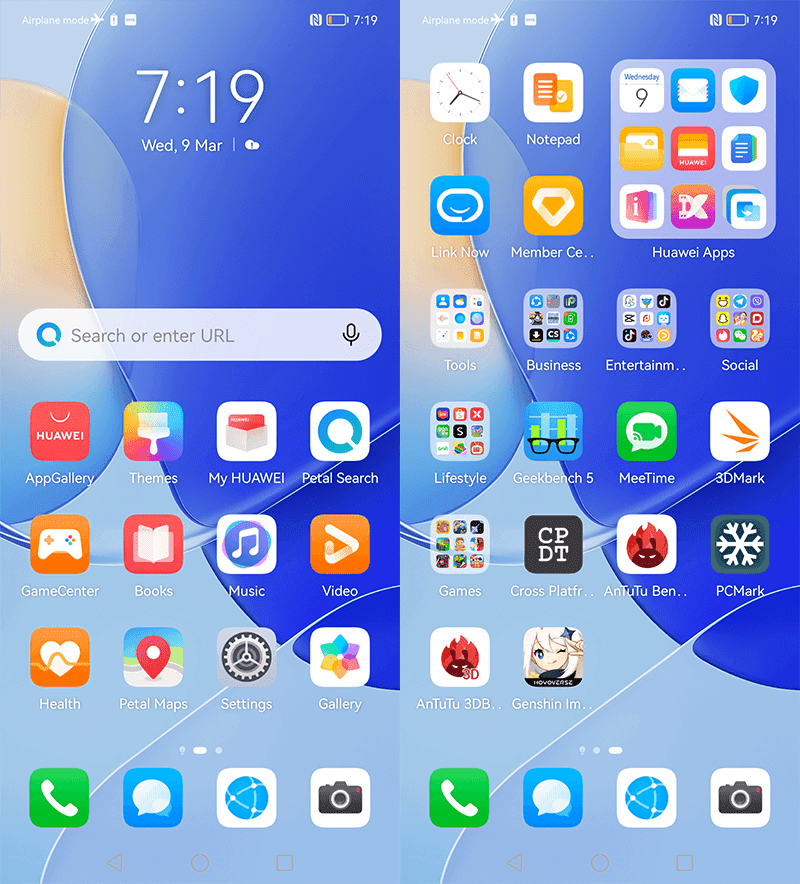Huawei recently released its newest camera-centric mid-ranger in the Philippines—the nova 9 SE and we have the device for review. Here are our thoughts and a first experience with the new smartphone from the Chinese giant.
 |
| Eye-catching design |
For starters, the device comes with a large 6.78-inch FHD+ TFT LCD display with a punch hole. Inside is the 6nm Qualcomm Snapdragon 680 octa-core processor, Adreno 610 GPU, 8GB RAM, 128GB of storage, and a 4,000mAh battery with 66W Huawei SuperCharge via USB-C.
At the back are 108MP quad-rear cameras and a 16MP selfie camera. This is the first Huawei smartphone with a 108MP main shooter.
Let's dive into the review.
Unboxing/Accessories
 |
| Box inclusions |
It arrives in the familiar white box with Huawei branding, key features, App Gallery, and regulatory information.
Inside the box are the nova 9 SE, 66W Huawei SuperCharge wall charger, SIM ejector tool, USB-A to USB-C cable, documentation, and silicone bumper case.
It is nice to see that Huawei still includes a charger and a silicone case inside the box. This has become a rarity in higher price smartphones. However, it is unfortunate that Huawei did not include earphones, unlike previous generations.
Build Quality/Design
 |
| Back panel |
The phone is made of a glass front, glass back, and polycarbonate frame.
This makes this phone incredibly lightweight in hand despite its size. Both the glass front and the glass back are fingerprint smudge magnets and are both slippery. We recommend wearing the included case right away.
There is no mention of glass protection for the display though.
 |
| SIM tray with rubber gasket |
The phone may have a form of water and dust resistance as the SIM tray is layered with a red rubber gasket. The SIM tray can carry up to two nano-SIM cards. It supports storage expansion using the Huawei nano Memory card.
With proper care, this handset should last for a long time.
At first glance, the phone looks similar to the previous nova 8 but with more polished trim.
The frame is smooth with a metal-like finish. Overall, the phone is eyecatching. But, it is slippery and is a fingerprint smudge magnet.
 |
| Top and Bottom |
On top of the panel is the slim earpiece that extends to the top of the phone. On the earpiece's left is the SIM tray while on the right is a microphone. At the bottom are another microphone, speaker grills, and the USB-C port.
 |
| Left and right |
On the left side is a smooth surface while on the right side is the volume rocker and the power button that doubles as a fingerprint scanner.
The phone measures 164.64 x 75.55 x 7.94 mm and weighs 191 grams. It is surprisingly lightweight.
Multimedia Experience
In front is the aforementioned 6.78-inch TFT LCD (IPS) display with a 2388 x 1080 resolution. It is large with good maximum brightness. This results in images that are sharp with strong contrast and vibrant colors that pop.
The slim bezels around the panel make the display more immersive but the punch hole in the middle can be hard to not notice at first. We got used to it after a while.
The earpiece works as an earpiece only. While the bottom-firing speaker produces a good high volume that can fill a small room. It will struggle in noisier environments though. At maximum volume, there is some tingy-ness and distortion. We recommend setting the volume at 90 percent for the best sound quality.
It does not have a 3.5mm audio jack for earphones.
The microphones can pick up audio from under a meter away. The noise cancellation is good enough that our callers never complained about voice quality. There is only one visible microphone port at the bottom.
Cameras
 |
Rear 108MP quad-cameras
|
At the back are the 108MP f/1.9 main camera, 8MP f/2.2 ultra-wide-angle camera, 2MP f/2.4 depth camera, and a 2MP f/2.4 macro camera with an LED flash.
The stock camera app includes the following modes: Photo, Video, Portrait, Night, Aperture, Panorama, Time-lapse, Stickers, Super Macro, Dual-View, and High-Res.
The Pro mode allows for controls of ISO (100-6400), Shutter speed (1/4000sec to 8 seconds), White Balance, EV (+-12), and for controls to switch between the 1x camera, 2x zoom, and 10x zoom.
It has a 108MP main camera, but the default output is 12MP due to its use of the 9-in-1 pixel fusion solution for better images. Why? It outputs 2.1μm big images. This is ideal as the Snapdragon 680 chip only supports up to 64MP cameras. It has no full 108MP mode though.
Rear Camera Samples
 |
| Daylight 1x |
 |
| Daylight 2x |
 |
| Daylight 10x |
 |
| Daylight ultra-wide |
In daylight, the images produced vary in quality. The 1x and 2x have decent sharpness with good color and contrast. The 10X has good color but is heavily pixelated. While the ultra-wide camera is softbut with good color and contrast.
 |
| Rear macro |
The included macro camera captures soft images with hints of color. We recommend shooting with the main camera instead.
 |
| Indoor 1x |
 |
| Indoor 2x |
 |
| Indoor 10x |
 |
| Indoor ultra-wide |
Indoors, the photos produce images with the same quality as the daylight images. The 1x and 2x performed the best while the ultra-wide lost sharpness. Sadly, 10x is far from good.
 |
| Low light 1x |
 |
| Low light 2x |
 |
| Low light 10x |
 |
| Low light ultra-wide |
In low light, the 1x and 2x cameras produced decently sharp images with good noise control and acceptable color accuracy. These mainly struggled with bright areas or light sources.
The 10x image and the ultra-wide images are a mess. We do not recommend using these in low light.
 |
| Night mode 1x |
 |
| Night mode 2x |
 |
| Night mode 10x |
The Night Mode is able to reduce the noise and improve the sharpness, detail, and color of the images of the 1x, 2x, and 10x. The 10x image isn't great but it is usable.
There is no night mode for the ultra-wide camera.
 |
| Front-facing camera |
While on the notch is the 16MP f/2.2 selfie shooter. The selfie includes the following modes: Photo, Portrait, Night, and Video.
Selfie Camera Samples
 |
| Daylight selfie |
In daylight, the selfie camera produces selfies with soft details, harsh contrast but with good color. It struggles with bright light sources like white clouds in the sky. |
| Portrait mode selfie |
Portrait mode selfie produces similar results with the daylight image but the edge detection is mostly good. It struggled with Neil's ears and hair.
 |
| Selfie indoors |
Indoors, there is an increase in noise and grain which slightly reduced the detail and sharpness of the image. Otherwise, the colors is still good and the contrast improves.
 |
| Low light selfie |
In low light, the phone struggled with increased noise, light sources and color accuracy. However, it is somewhat usable.
 |
| Night mode selfie |
The Night mode significantly improves the color, sharpness, contrast, and noise. We highly recommend using the night mode when the subject is not moving.
The rear and front cameras can capture up to 1080p at 30fps only.
Note: We will upload our video samples here. Stay tuned!
Performance
 |
| AnTuTu and GeekBench |
Inside the phone is the 6nm Qualcomm Snapdragon 680 octa-core processor, Adreno 610 GPU, 8GB RAM, and 128GB UFS 2.1 storage. Huawei says that the nova 9 SE uses a graphene heat dissipation system that helps in cooling the internals.
It managed to score 253,666 in AnTuTu and scored 386 in Single-Core and 1638 in Multi-Core test in GeekBench. This means that it has good single-core performance and good multi-core performance. In fact, it managed to do 10 percent better in AnTuTu than the vivo Y33s with the same SD680.
The aforementioned graphene cooling system is impressive as it managed to cool the phone while running the AnTuTu benchmark. The phone only warmed up by half a degree. That is impressive.
 |
| 3d Mark and CPDT |
While in 3DMark Wild Life, the phone managed to score 452 overall and got a 2.7 fps average. These scores are good but depending on the price, there may be better choices.
While in the internal storage benchmark CPDT, it scored over 426.37 MB/s in sequential write speeds and 406.37 in sequential read speeds. These are very impressive read speeds.
 |
| Call of Duty: Mobile |
In the latest version of Call of Duty: Mobile, the phone managed to unlock the Very High graphics settings and the High frame rate setting. However, to use the High and Very High Graphics settings, the Frame rate is locked at Low.
We suggest setting the graphics to Low and High frame rates for the smoothest experience. The phone warms up quickly but even after a longer play session, it never became uncomfortably hot.
The cooling system that Huawei used works!
The side-mounted fingerprint scanner is easy to set up and it detects and scans the fingerprint quickly. Because it is a dedicated sensor, it scans our fingerprints and unlocks the phone instantaneously.
While the Face Unlock with the selfie camera is also easy to set up and it works fast. It detects our faces and unlocks the phone instantaneously in both well-lit and poorly lit environments. The screen brightens up when in a darker environment too.
The phone works with OTG when the feature is enabled manually. The WiFi, Bluetooth 5.0, and LTE connections are fast, stable, and reliable. The GPS acquires our location immediately and accurately. It does not have 5G.
 |
| PCMark Battery benchmark |
Inside the phone is a large 4,000mAh battery with 66W fast charging thru USB-C. In our usual PCMark battery test, the phone managed to endure over 15 hours and 49 minutes. For only 4,000mAh this score is impressive.
While in our real-world use where we use the phone as our daily driver, it managed to last for an average of 7 hours of on-screen time after a loaded 8-hour workday. This is expected given that there is still 15 percent battery left even though we were connected to LTE and WiFi the whole day.
45 minutes from 0 to 100 percent!
It takes the phone under 45 minutes to charge from 0 to 100 percent with the 66W charger. This is one of the fastest charging for its price range. It is not the fastest but it is fast enough to top-up enough to make the battery last even longer.
 |
| EMUI 12 |
For software, it is running on the latest EMUI 12. It features HMS and Huawei AppGallery. The OS itself is snappy and responsive. We almost never experience lag navigating thru the OS, opening and switching apps, and using it as a phone.
It does however have inconsistent experience with apps services. This includes Google's services even when using the web browser. Don't get us wrong. Huawei's software and app experience has improved significantly. It will take more time to get it right.
If you are willing to risk it, then it may be for you. But if you want consistency and reliability, we would recommend you look elsewhere.
Pros - Eye-catching design, solid and lightweight build materials, great battery life, decent performance
Cons - Cameras should be improved, similarly priced phones have 5G, lack of Google services out of the box is still a concern
Huawei nova 9 SE Specs
Display: 6.78-inch 2.5D curved TFT LCD (IPS) screen w/ 90Hz refresh rate, 270Hz touch sampling rate, FHD+ 2388 x 1080 resolution at 387 ppi
CPU: 2.4GHz 6nm Snapdragon 680 octa-core processor
GPU: Adreno 610
RAM: 8GB
ROM: 128GB
Back Camera: 108MP f/1.9 w/ Phase focus, contrast focus + 8MP f/2.2 112-degree ultra-wide-angle + 2MP f/2.4 4cm macro + LED flash
Selfie Camera: 16MP f/2.2
Battery: 4,000mAh w/ 66W SuperCharge
OS: EMUI 12
Connectivity: WiFi 802.11a/b/g/n/ac (2.4GHz/5GHz), 4G LTE, Bluetooth 5.0, GPS, A-GPS, GLONASS, BeiDou, Galileo, QZSS, dual SIM
Sensors: Accelerometer, light, orientation, proximity, gyroscope, sound, magnetic, pressure Others: Side-mounted fingerprint sensor, graphene heat dissipation system, USB-C, Colors: Crystal Blue, Pearl White, Midnight Black
Dimensions: 164.64 x 75.55 x 7.94 mm
Weight: 191 g
Price: PHP 13,999
 |
| Web browsing |
The Huawei nova 9 SE has a lightweight body made of solid build materials with an eye-catching design. Its combination of a 4,000mAh battery and 66W battery makes sure that the battery lasts for more than a day while having super-fast charging.
The phone's internals performs better than similar phones with the same specs. The Graphene cooling system is efficient as well.
However, we think that the camera could be significantly improved. The ultra-wide camera in particular suffers indoors and in low light.
HMS and AppGallery software compatibility has improved over the years but it may still be a concern for people who depend on Google services.
What do you guys think?
Build/Design - 4.25
Multimedia Experience - 4.25
Cameras - 3.5
Performance - 4
Average - 4/5

.gif)





















































Post a Comment